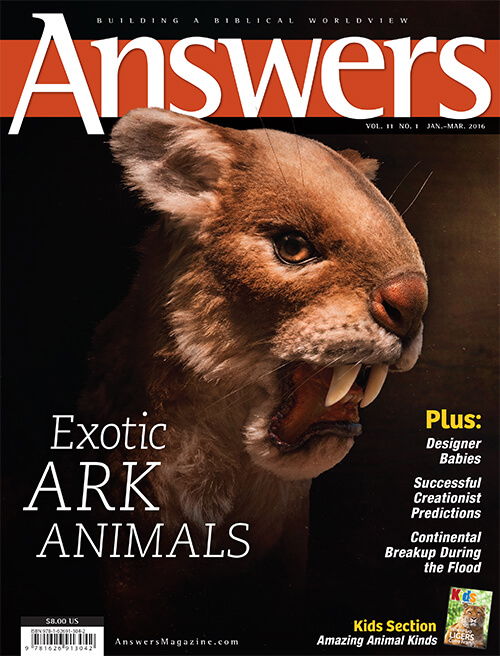Science in Sunday School
Last Word
Christians need to be equipped to address the great questions of our day regarding science and earth history. But is Sunday school the place to do this?

Mike Matthews
Editor in Chief
I still remember the first time I heard Ken Ham thunder from the lectern, “Churches need to teach science, not just Bible ‘stories’!”
That was provocative. But it had a context. In the face of withering attacks on God’s Word in Genesis 1–11, the church can’t fulfill its duty of “equipping the saints for ministry” without answering the attacks of our day (Ephesians 4:12).
“That makes sense,” I thought to myself at the time. But my agreement was only theoretical—until last fall, when my church’s Sunday school curriculum turned to Genesis. Now was my chance to test Ken’s proposal, I thought.
Too Much to Cover
When I opened the curriculum, I discovered it devoted only one lesson to the “story” of Genesis 1. Another five lessons covered the gamut of history from the Fall to the Flood and Babel. That gave me three hours (30 minutes per lesson) to teach eleven of the most important chapters in the Bible!
What should I do?
I soon realized the practical challenges to teaching science in Sunday school. It sounds good in theory, but it’s hard to implement. We have such limited time.
How could I devote proper attention to Scripture, and still equip my class to address the great questions of earth history? I had some tough choices. If I added lessons on Creation or the Flood, I’d have to drop lessons on Abraham later in the series.
I had to pray hard and review my priorities. A teacher’s primary aim is not to convey every minutia of Bible truth. Instead, it is (1) to equip believers with the big picture from Scripture so they can put together details on their own; and (2) to inspire them to go out and study the Bible further on their own.
Since my class already knew the basics about Abraham, I decided to focus on their biggest needs. Even then, it wasn’t easy. What to cover?
The Main Thing
I realized that I didn’t have to cover everything. I just needed enough specifics to convey the big picture and excite them to learn more. Then I could provide extra resources, such as articles, books, and videos.
We had a lot of fun. I even showed them the “funky kinds” drawings from this issue. Such interesting details reinforce the Bible’s main message, while exciting believers to learn more. I was trying to imitate the example of Christ, who also took memorable illustrations from nature and history (for example, see Luke 12:24 and 13:4).
I believe every church—and every individual—should regularly devote a block of time to studying Genesis 1–11 because it is so foundational to our faith and the gospel.
The nice thing is we don’t have to do everything at once. And Sunday school isn’t the only place to do it. For instance, pastors can preach a series from the pulpit, or churches can host one-day Bible conferences.
Since I’m not a part of those decisions, I decided to offer my help in another way. Since God has given me the privilege of compiling helpful stuff over years at the magazine, I decided to ask my pastor if I could teach an elective on Wednesday nights.
It may be a lot of work, but I take Ken Ham’s challenge seriously. What about you?
Next Issue
How well do you know the views of modern creationists? In the April issue you can test whether you’re up to date. Also learn how old ages for the earth are based on mistaken evolutionary assumptions about meteorites; and discover from Scripture how Christians can effectively share the gospel with homosexuals.
Answers Magazine
January–March 2016
Discover the role of ancient Near Eastern writings in understanding Scripture and learn about some exotic animals that can only be explained by a Creator.
Browse IssueRecommended Resources

Answers in Genesis is an apologetics ministry, dedicated to helping Christians defend their faith and proclaim the good news of Jesus Christ.
- Customer Service 800.778.3390
- Available Monday–Friday | 9 AM–5 PM ET
- © 2025 Answers in Genesis






